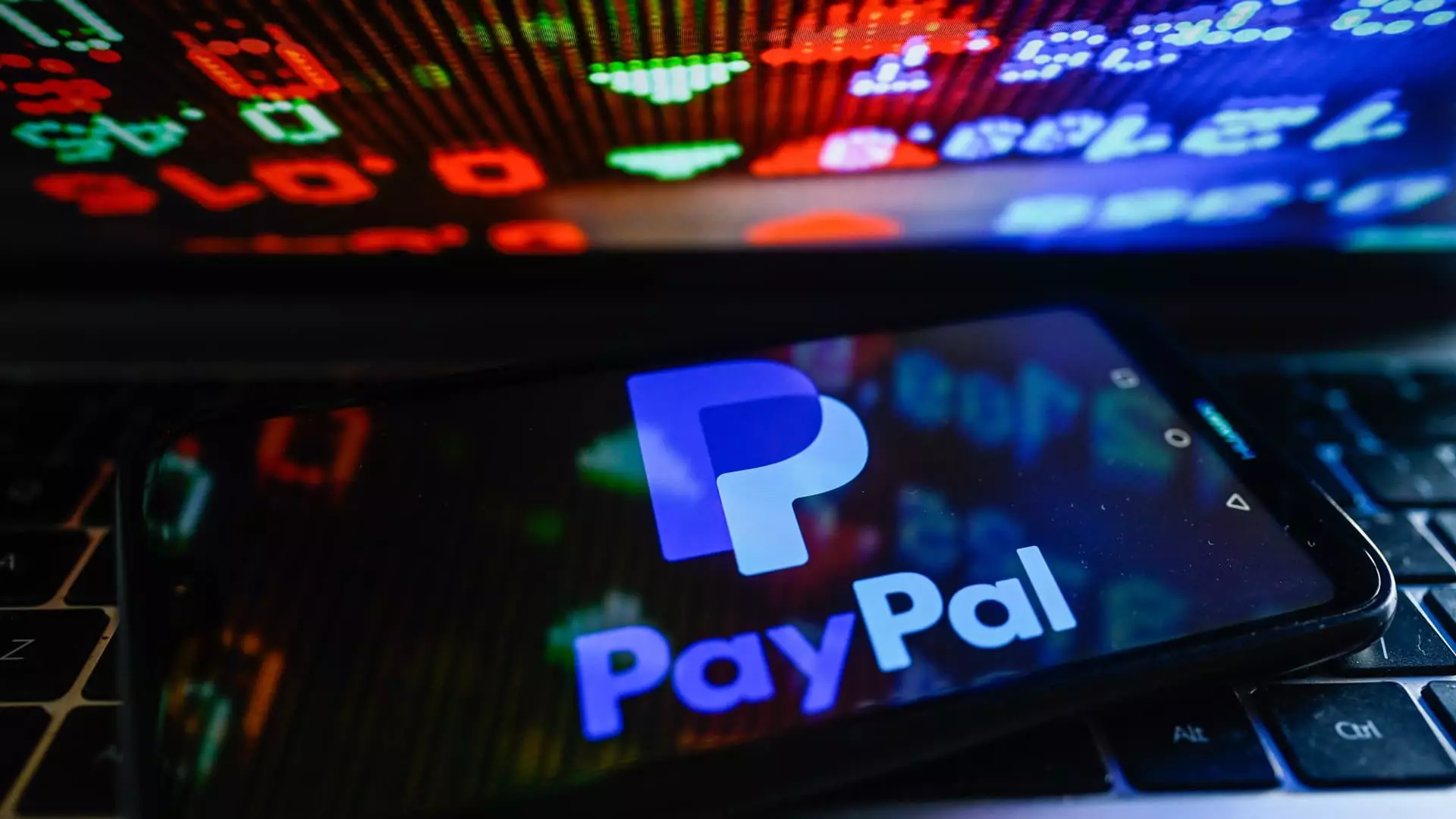In the ever-evolving landscape of cryptocurrency, one segment is continuously gaining attention: stablecoins. These financial instruments promise to provide stability against the notorious volatility of cryptocurrencies. However, as Coinbase removes fees for purchasing PayPal’s stablecoin, the urgency of the situation reveals deeper, unsettling trends in the crypto market. With PayPal USD (PYUSD) struggling to secure a foothold, the recent partnership signifies an aggressive attempt to accelerate adoption in a notoriously difficult sector.
Despite the lofty ambitions of Coinbase and PayPal, which aim to capture a barely-there market share, the statistics tell a different story. PayPal USD commands a meager market cap of approximately $730 million, languishing under the shadows of industry behemoths Tether’s USDT (66.5%) and Circle’s USDC (28.3%). These figures evoke a question: Is PYUSD merely a case of ‘too little, too late’? While Coinbase belches its optimism about accelerated adoption and utilization, the figures paint a picture of a floundering initiative.
Collaboration or Competition? The Tensions Within the Industry
Coinbase and PayPal’s strategic collaboration aims to create innovative solutions for global transactions. Yet, the financial sector’s competitive nature stirs skepticism. As Ripple also unveils its own stablecoin, RLUSD, the landscape is fast becoming saturated. This push for partnerships might look cooperative on the surface, but it masks an underlying tension. Does the introduction of yet another stablecoin truly benefit consumers in a market that already presents staggering complexities?
Perhaps the most alarming aspect is the institutional momentum propelling this race. Companies like Circle are elbowing their way into the payments market, creating a stiff competition that PayPal historically dominated. With Circle’s recent foray into the public market and the launch of payment networks tailored for financial institutions, the incumbents find themselves scrambling. It raises the stakes: Can traditional players like PayPal adapt quickly enough to maintain relevance in a blockchain-infused world?
The Reality of Adoption: More Than Just a Coin
The notion that stablecoins can revolutionize global commerce comes with its own set of caveats. Historical usage patterns show that stablecoins primarily facilitate trading and borrowing within a niche, tech-savvy audience. The broader consumer base is not yet equipped or particularly inclined to move towards digital payment solutions. The excitement generated by PayPal and Coinbase may not translate into increased utility — an unsettling reality for those investing in the narrative of mass adoption.
The unyielding propaganda efforts from tech CEOs, promising innovation and groundbreaking applications, may be little more than hot air. This is not to dismiss the potential use cases for PYUSD within decentralized finance (DeFi); however, feeling hopeful about its use hinges on a collective shift in consumer preferences and the overall transactional infrastructure. Until that occurs, the coin’s actual utility remains unproven.
Coinbase’s Ambitions: A Double-Edged Sword
Brian Armstrong, CEO of Coinbase, has outlined grand ambitions centered around revolutionizing the global economy with cryptocurrency. Yet, the focus on stablecoins as a lever for revenue diversification raises eyebrows. It’s concerning to see a leading crypto exchange putting its faith in a partnership with PayPal, relying on a relatively weak stablecoin to pivot away from volatile trading revenues. Does such a strategy genuinely hold the key to a sustainable future?
Armstrong’s proclamation of “stretch goals” for USDC hints at an industry-wide volatility that might not be conducive to stable growth. As Coinbase adds new stablecoin trading pairs and promotes collaborations with players like Stripe and Yellow Card, it begs the question: Is the company overextending itself? The hope rests in partnerships, but with the shadow of competition looming large, Coinbase’s strategy could quickly turn perilous if it fails to adapt to shifting market dynamics.
The Risk of Misalignment in Regulatory Climate
With Congress inching closer to enacting crypto legislation focused on stablecoins, the precarious balance of opportunity and risk becomes more pronounced. Swift legislative changes may impose regulations that reshape the entire stablecoin landscape overnight. Anticipating sweeping regulations could serve to bolster efforts by PayPal and Coinbase, but it could just as easily cripple them if they misalign with regulatory expectations. The creeping uncertainty leaves a chilling implication — the ground can shift beneath even the most promising of partnerships.
As this dynamic continuously evolves, so does the question of stablecoin utility and trustworthiness. There’s a limited window for PayPal USD and others like it to refine their models and secure consumer confidence before it’s too late. The tenuous alliance between Coinbase and PayPal raises apprehensions that this ambition, steeped in optimism, risks falling prey to the heavy hand of market realities.

